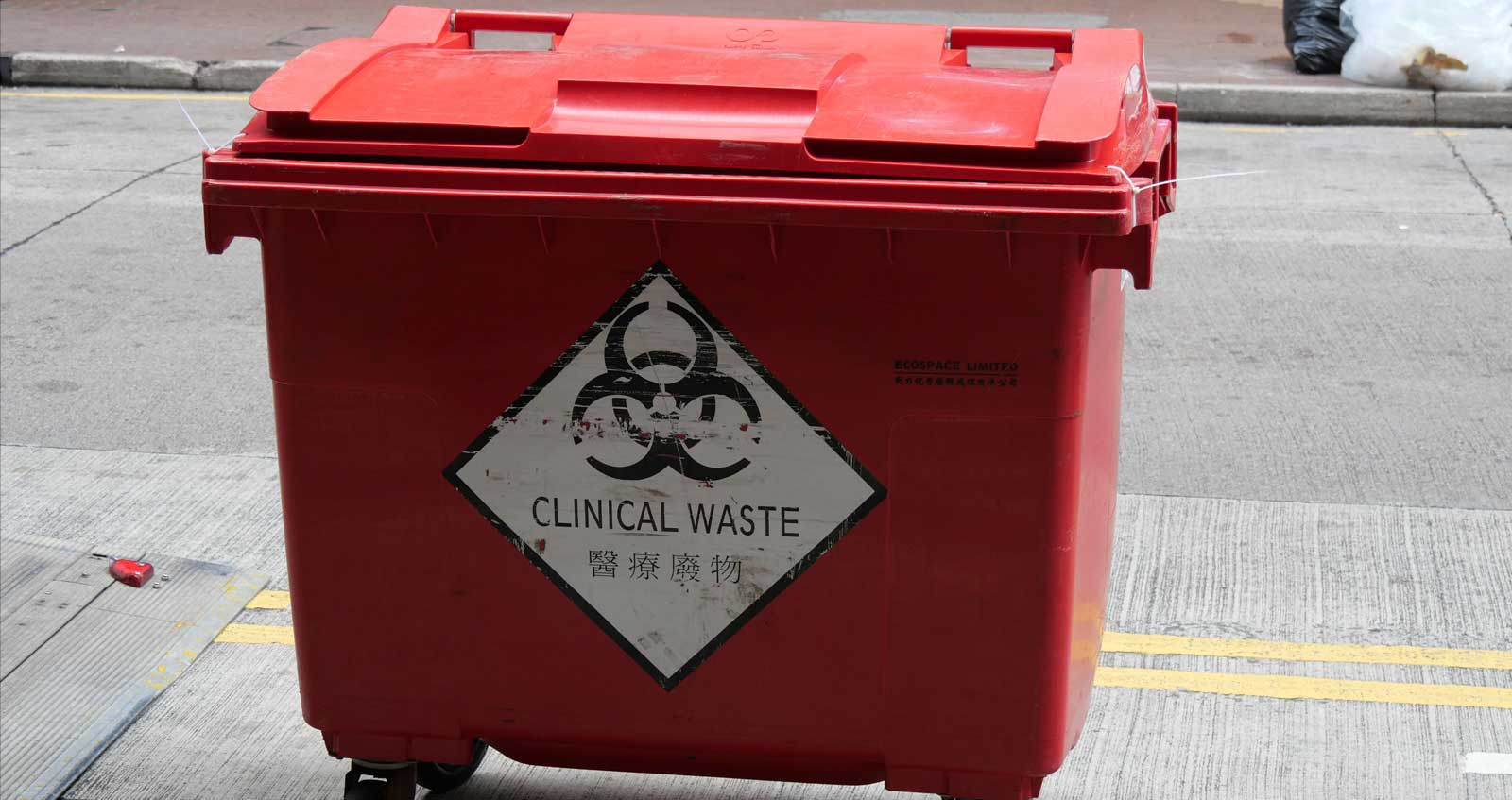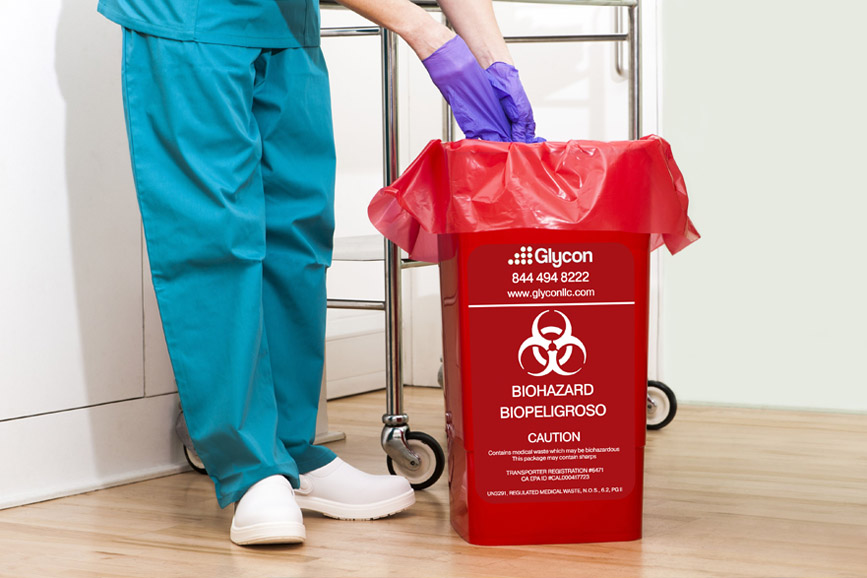Guardians of Sanitation: Citizen Medical Waste Removal Service for Your Satisfaction
Guardians of Sanitation: Citizen Medical Waste Removal Service for Your Satisfaction
Blog Article
Remain Ahead of Rules: Expert Recommendations on Medical Garbage Disposal
In a globe where the healthcare sector is constantly advancing, it is essential for clinical centers to stay ahead of policies when it comes to the proper disposal of medical waste. From recognizing the different groups of clinical waste to executing the right collection and partition methods, this conversation will certainly supply workable suggestions and valuable understandings to help centers stay in advance of regulations in the ever-changing landscape of medical waste disposal.
Comprehending Clinical Waste Categories
Comprehending medical waste categories is crucial for appropriate disposal and management in health care centers. Medical waste refers to any type of waste created by health care tasks that may posture a hazard to public health and wellness or the setting. It is important to classify medical waste accurately to ensure its secure handling, transportation, treatment, and disposal.
There are numerous categories of medical waste that health care centers need to be familiar with. One of the most usual categories include transmittable waste, pathological waste, sharps waste, pharmaceutical waste, and chemical waste. Each category has particular standards and laws for its appropriate monitoring and disposal.
Pathological waste refers to human tissues, organs, or body parts that require unique handling and disposal. Drug waste consists of run out, extra, or polluted medications that need careful handling and disposal.
Staying Up-To-Date With Regulatory Changes
Staying existing with governing modifications is vital for healthcare centers to make certain conformity and appropriate administration of medical waste disposal. medical waste removal. With regulations frequently progressing, it is necessary for health care facilities to remain updated to prevent penalties, penalties, and prospective damage to the atmosphere and public health
To remain in advance of governing adjustments, health care facilities need to establish a system for monitoring and tracking updates. This can be done by signing up for governing newsletters, participating in workshops and conferences, and proactively taking part in industry associations. Additionally, facilities ought to designate an employee or group in charge of staying notified and sharing info to appropriate stakeholders.
Regular communication with regulatory agencies is additionally vital. Medical care facilities must establish relationships with local, state, and federal firms to ensure they know any adjustments in policies that might impact their waste administration techniques. This can be done through routine meetings, involvement in public remark durations, and proactive interaction with regulatory agencies.
Moreover, healthcare centers must consider partnering with waste monitoring companies that concentrate on medical garbage disposal (medical waste disposal services with WasteX). These companies are commonly fluent in the newest guidelines and can give guidance and support to make sure conformity
Implementing Proper Collection and Segregation Methods
To successfully handle clinical garbage disposal, medical care centers must establish proper collection and segregation methods based on regulatory guidelines. Executing these techniques makes sure the risk-free handling and disposal of potentially dangerous products, safeguards the atmosphere, and lessens the danger of infections and injuries to health care workers and the general public.
Appropriate collection and segregation methods involve using marked containers and identifying systems. Healthcare centers must supply plainly identified containers for different sorts of clinical waste, such as sharps, transmittable waste, pharmaceutical waste, and non-hazardous waste. These containers need to be color-coded and plainly marked to avoid complication and advertise simple identification.
Additionally, medical care centers ought to educate medical waste disposal services with WasteX their personnel on the right procedures for accumulating and setting apart medical waste. This consists of informing them on the different kinds of waste, the proper containers to use, and the importance of adhering to guidelines and guidelines. Normal training sessions and refresher courses must be conducted to guarantee that employee remain current on best techniques.
Moreover, medical care facilities need to establish a system for normal collection and disposal of medical waste. This may include partnering with licensed waste administration companies that focus on clinical garbage disposal. These business will make sure that the accumulated waste is delivered and gotten rid of in conformity with regulative needs.
Selecting the Right Disposal Approaches

Incineration is among one of the most common and effective methods for throwing away certain kinds of medical waste, such as pathological waste and sharps. It includes the controlled combustion of waste at heats, decreasing it to ash. Nevertheless, incineration can launch unsafe toxins right into the air and add to air contamination.

Chemical treatment includes the usage of chemicals to neutralize the waste and sanitize. Microwave treatment uses microwave energy to heat and sanitize the waste.
Making Sure Compliance With Paperwork and Training
After carefully thinking about the suitable disposal techniques for medical waste, health care facilities should guarantee compliance with laws and minimize ecological impact by executing effective documents and training treatments. This action is vital in keeping a sustainable and safe environment for both medical care workers and the public.

Training is similarly vital in ensuring conformity with regulations. Healthcare workers that take care of medical waste ought to get appropriate training on waste segregation, managing, and disposal treatments. This training should cover topics such as the proper use individual safety tools, recognition of different sorts of waste, and the appropriate disposal techniques for every waste category. By supplying comprehensive training, healthcare facilities can empower their staff to make informed decisions and decrease the risk of improper waste disposal.
Final Thought
Finally, read remaining in advance of guidelines in medical waste disposal is essential for healthcare facilities. medical waste removal. Recognizing the various classifications of medical waste, remaining upgraded with regulative modifications, carrying out appropriate collection and segregation approaches, selecting the suitable disposal methods, and making certain compliance through documents and training are all necessary steps. By following these standards, health care organizations can successfully dispose and manage of clinical waste in a safe and liable fashion
From understanding the various categories of clinical waste to carrying out the right collection and partition methods, this conversation will supply beneficial understandings and actionable ideas to aid facilities remain in advance of guidelines in the ever-changing landscape of medical waste disposal. - medical waste disposal services with WasteX
The most common classifications consist of infectious waste, pathological waste, sharps waste, pharmaceutical waste, and chemical waste. Healthcare facilities ought to supply plainly identified containers for various kinds of clinical waste, such as sharps, transmittable waste, pharmaceutical waste, and non-hazardous waste. Medical care centers should establish a comprehensive system to tape-record and track all aspects of medical waste disposal, including types of waste generated, quantities, and disposal methods used. Medical care employees that manage clinical waste must get proper training on waste partition, managing, and disposal procedures.
Report this page